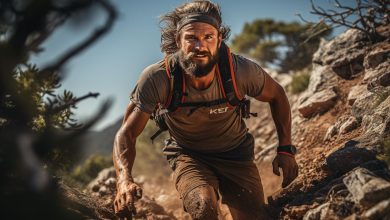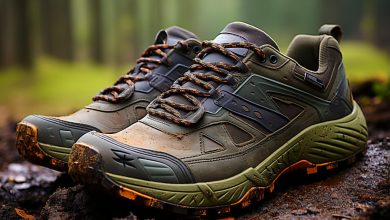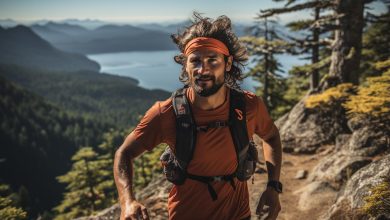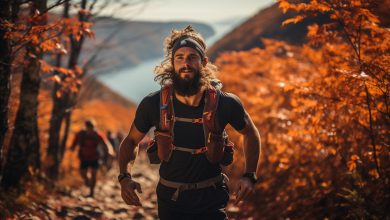Trail Running Gear: What You Need for a Successful Run
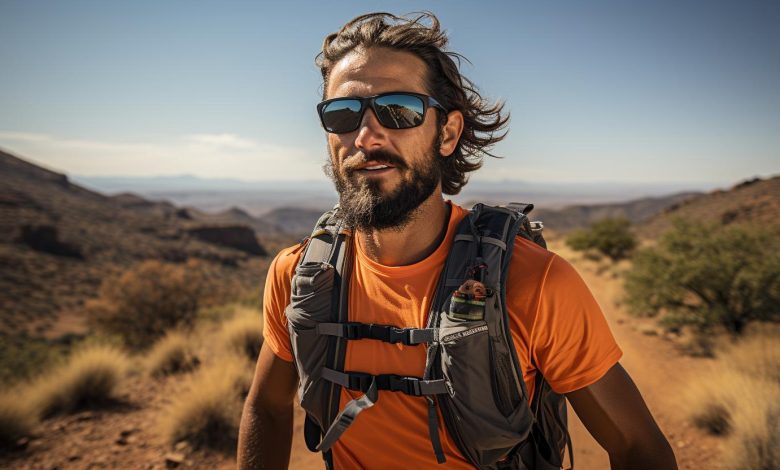
You might be thinking, ‘I don’t need any fancy gear to go trail running.’ But let us tell you, having the right equipment can make a world of difference.
In this article, we’ll show you exactly what you need for a successful run on the trails.
From essential footwear that provides grip and support to protective gear that keeps you safe, we’ve got you covered.
So lace up your shoes and get ready to hit the trails with confidence!
Essential Footwear for Trail Running
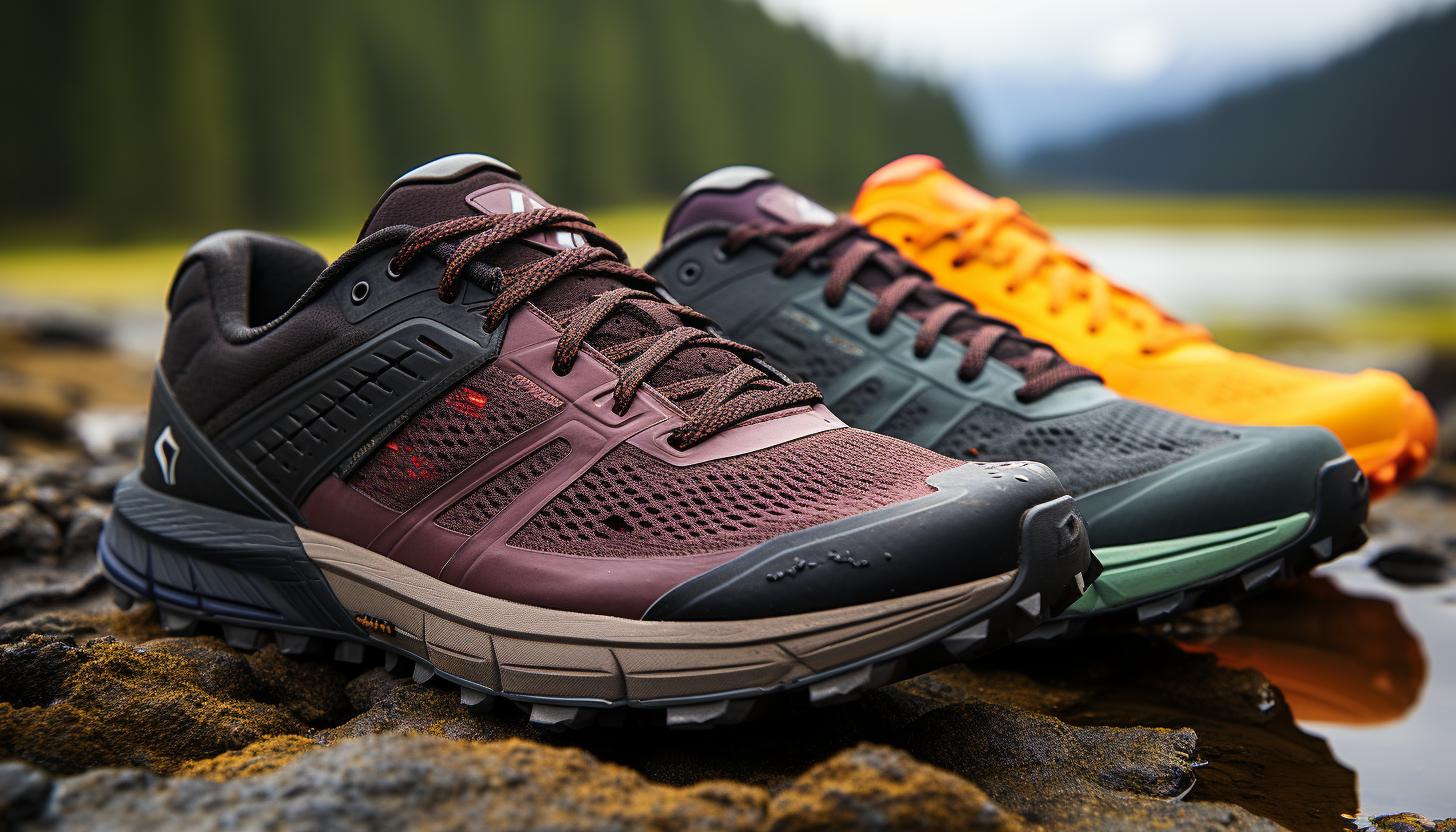
When trail running, it’s important to wear the right footwear to prevent injury and ensure a successful run. Trail running shoes are specifically designed to tackle uneven terrain, providing you with stability and protection. These shoes come with several features that make them perfect for off-road adventures.
First and foremost, trail running shoes have a more aggressive outsole compared to regular running shoes. The lugs on the sole provide excellent traction on various surfaces like dirt, rocks, and mud. This ensures that you won’t slip or lose your footing while navigating through challenging trails.
Another important feature of trail running shoes is their reinforced toe cap. This protective layer shields your toes from any accidental impacts with rocks or tree roots along the way. Additionally, these shoes often have a rock plate embedded in the midsole to protect your feet from sharp objects such as stones.
Choosing the right trail running shoe depends on factors such as your foot shape, pronation type, and personal preferences. It’s essential to try on different brands and models to find the perfect fit for you.
Now that you know how crucial proper footwear is for trail running, let’s move on to discussing hydration and nutrition for long runs.
Hydration and Nutrition for Long Runs

Don’t forget to pack your hydration and nutrition essentials for those long runs! Fueling strategies are crucial for maintaining energy levels and preventing dehydration during intense trail running. Here are three items you should consider including in your gear:
– Hydration Pack: Stay hydrated on the go with a hydration pack. These packs come with a built-in water reservoir and a tube that allows you to drink water without slowing down or stopping. Look for one that fits comfortably on your back and has enough capacity to hold sufficient water for the duration of your run.
– Energy Gels: To keep your energy levels up, consider packing some energy gels. These small packets contain concentrated carbohydrates that provide quick fuel for your muscles. They are easy to carry and consume, making them ideal for long-distance runs when you need an extra boost.
– Electrolyte Supplements: When you sweat, you lose important electrolytes like sodium, potassium, and magnesium. Replenishing these electrolytes is essential for maintaining proper muscle function and preventing cramps. Consider taking electrolyte supplements in tablet or powder form to ensure optimal hydration.
By properly fueling yourself with hydration packs, energy gels, and electrolyte supplements, you’ll be able to tackle those long runs with confidence and optimize your performance.
Now let’s move on to the next section about protective gear for trail running safety…
Protective Gear for Trail Running Safety

Make sure to wear the appropriate protective gear to ensure a safe and enjoyable trail running experience. When it comes to trail running, there are two essential pieces of protective gear that you should consider: a trail running helmet and trail running knee pads.
A trail running helmet is crucial for protecting your head in case of any falls or collisions with branches or rocks along the trail. Look for a lightweight helmet that provides adequate ventilation to keep you cool during your run. It should fit securely on your head and have adjustable straps for a customized fit.
Trail running knee pads are another important piece of protective gear, especially if you’re tackling rugged terrain with uneven surfaces. These pads provide cushioning and support to protect your knees from impact and reduce the risk of injury. Look for knee pads that offer flexibility, breathability, and a secure fit without restricting your movement.
Technical Clothing for Performance and Comfort

Wearing technical clothing is essential for achieving optimal performance and comfort during your trail runs. When it comes to choosing the right gear, there are a few key factors to consider.
– Moisture wicking fabrics: Look for clothing made from materials that have moisture-wicking properties. These fabrics are designed to pull sweat away from your skin, keeping you dry and comfortable throughout your run. Examples of moisture-wicking fabrics include polyester and merino wool.
– Proper layering techniques: Layering your clothing is crucial when it comes to adapting to changing weather conditions on the trail. Start with a base layer made of moisture-wicking fabric, then add an insulating layer for warmth, and finish with a waterproof or windproof outer shell. This allows you to easily adjust your temperature by adding or removing layers as needed.
– Breathable and lightweight designs: Opt for clothing that is breathable and lightweight. This will help regulate body temperature and prevent overheating during intense runs. Look for features such as mesh panels or vents that promote airflow, ensuring maximum breathability while reducing bulkiness.
Must-Have Accessories for Trail Runners
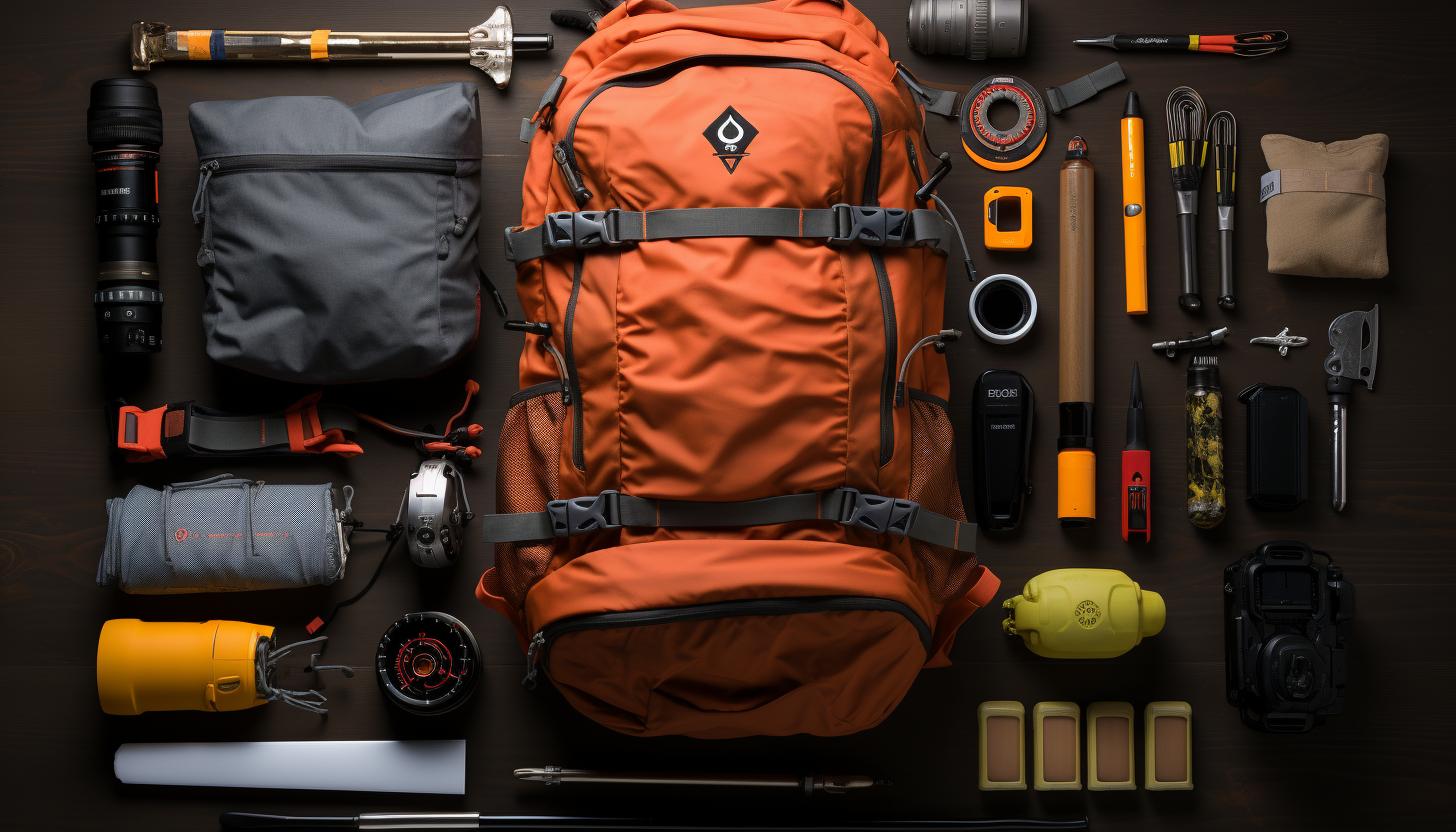
To enhance your trail running experience, consider investing in these must-have accessories.
One essential accessory for trail runners is a good backpack. When choosing a trail running backpack, look for one that is lightweight and has enough storage space for all your essentials, such as water bottles, snacks, and extra layers of clothing. It should also have adjustable straps and a comfortable fit to prevent any discomfort or chafing during your runs.
Another crucial accessory for trail runners is a GPS watch. A GPS watch can track your distance, pace, elevation gain, and even provide navigation features to help you stay on the right path. When choosing a GPS watch for trail running, consider its battery life – you want one that will last long enough for your longest runs. Also, make sure it has accurate GPS tracking capabilities to ensure precise data recording.
In addition to backpacks and GPS watches, other must-have accessories include hydration belts or vests to carry water on longer runs, compression socks or sleeves to improve circulation and reduce muscle fatigue, and headlamps or reflective gear for safety during early morning or evening runs.
Conclusion
Congratulations! You’re now equipped with all the necessary gear for a successful trail run.
With your trusty footwear, you’ll feel like a nimble mountain goat bounding through the wilderness.
Stay hydrated and fueled up with your water pack and energy bars, ensuring you have the stamina to conquer any distance.
Don’t forget to protect yourself with knee pads and a helmet, transforming into an unstoppable force against any obstacles in your path.
Lastly, dress in high-performance clothing that will make you feel like a superhero gliding through the trails.
And remember to accessorize with a GPS watch and headlamp for those epic adventures after dark.
Now go out there and let nature be your playground!

